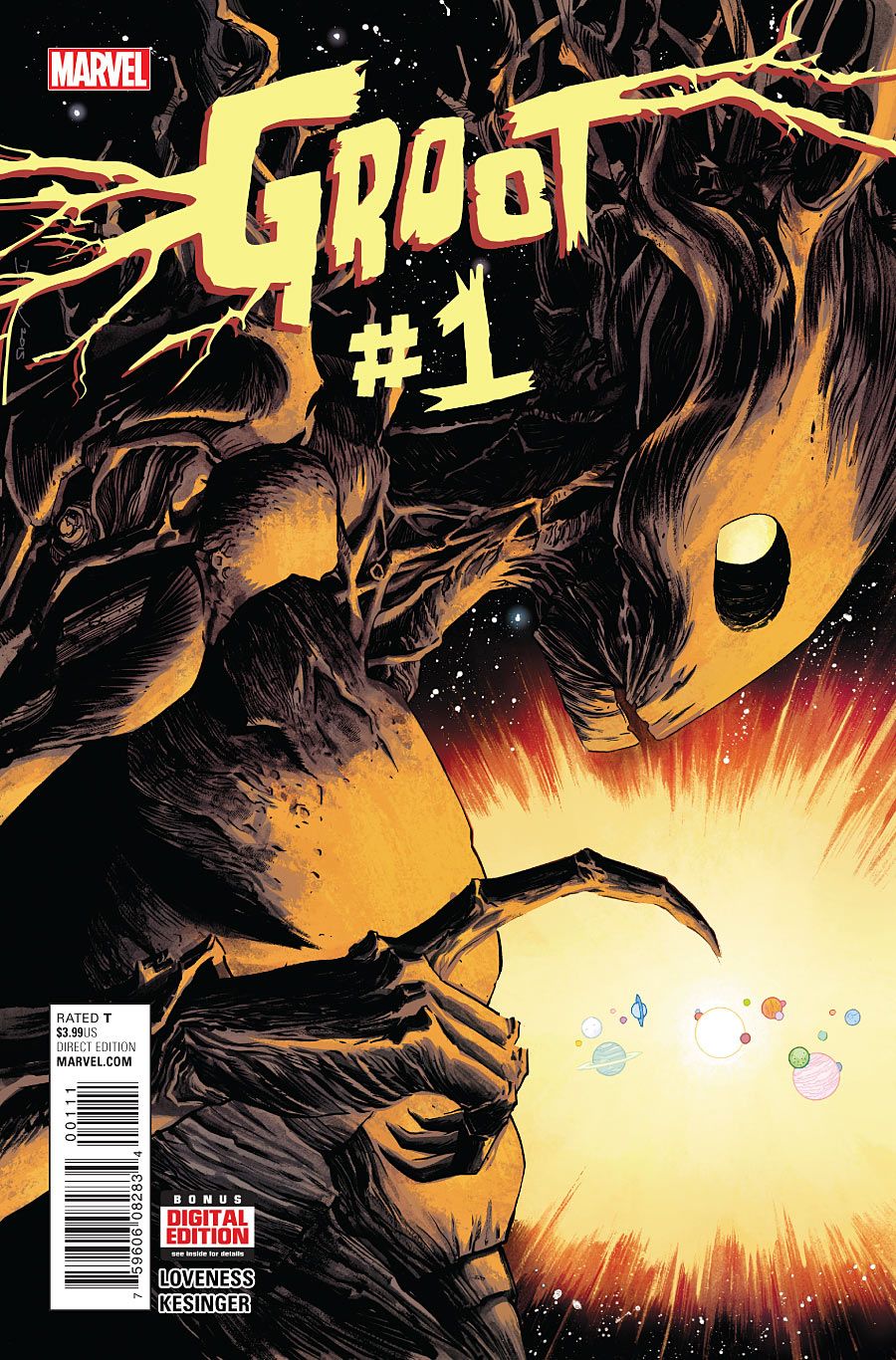"Groot" #1 by Jeff Loveness and Brian Kesinger is billed as the first solo title for Monarch of Planet X. The debut issue is more a continuation of "Rocket Raccoon," however, because Groot and Rocket Raccoon hitchhike together throughout the issue and reprise their usual double act.
That's not a bad thing, though. The combination of Rocket the irascible pragmatist and Groot the cheerful optimist is still a winner. "Groot" #1 is structured like a sitcom. The action is anchored by major humorous events and setting changes, which are all filled with smaller jokes in conversation and visual gags.
Loveness' dialogue is witty and energetic. The flow of words carries the reader through the comic. Kesinger really knows how to amplify the humor of the script through the art, too. His background as an animator shows in his comic timing and the exaggerated facial expressions. The opening page derives most of its humor from Rocket Raccoon's outraged look in contrast to Groot's happy and goofy face. Kesinger's composition also gives the scene a feeling of buoyancy.
Artists don't always know what to do with the lack of structured interiors and landscapes in outer space. There's no such trouble with Kesinger, whose backgrounds have both depth and texture. His approach treats outer space like a big ocean or highway system, dotted with ships or vehicles. The shark battle scenes have especially attractive composition and color work. Space scenes are often colored in only blue, purple and black, so it's refreshing how Kesinger isn't limited by convention. His balanced palette of warm and cool tones gives the visuals a friendly, inviting atmosphere.
The action in "Groot" #1 is linear, but it doesn't have an overarching shape yet, so each encounter is a surprise. It's lovely to not expect what's coming next. Loveness and Kesinger are delightfully imaginative with the troubles they concoct. Loveness makes the hitchhiking setup even funnier by giving Rocket and Groot's first benefactor a cargo of three-eyed chickens. I thought it would be difficult to top the attack by a school of space sharks, but the second hitchhiking attempt is even funnier. There's a panel that's worth the price of the comic to see, when one of the hosts makes a mistake that results in a hybrid shape.
In a cafe interlude between action scenes, the tone gets a little more serious, with Rocket Raccoon confiding in Groot about his feelings. None of this is a surprise, but the rhythms of the conversation feel right, and this small moment of vulnerability creates warmth and reaffirms the friendship.
However, the second half of the comic is more formulaic and less funny. The scene at the end of "Groot" #1 feels mechanical and purely functional. Despite Kesinger's dynamic artwork, it's a little too bland to stand up to the earlier, funnier encounters. Also, because the overall tone of the story is light, Loveness fails to create much suspense.
Despite these criticisms of the conclusion, "Groot" #1 is an overall fantastic debut issue that's worth reading just for the humor. It'll be interesting to see how Loveness and Kesinger handle the next issue and to compare their approach to Skottie Young and Jake Parker's work on "Rocket Raccoon."

